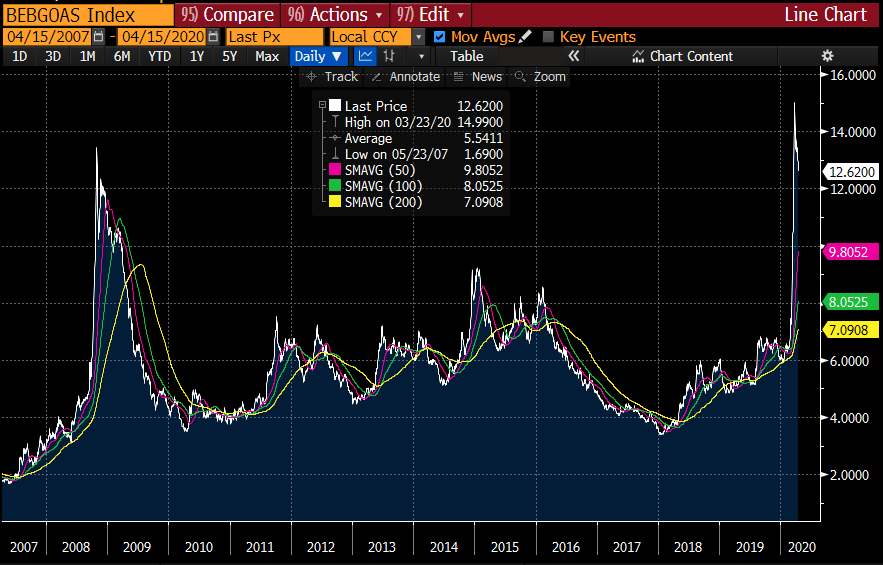Credit Dislocation

The COVID-19 crisis has translated into one of the biggest financial markets shock in history. The spread in Emerging Market High Yield Debt widened more than during the global financial crisis in 2008. Importantly, this widening happened in a matter of few weeks. This shock is also visible in most asset classes across financial markets. There were essentially two catalysts that explained this crash.
First, the pandemic obliged most countries to suddenly shut down, creating a deep recession without the usual slowdown process which could have allowed to anticipate it. The COVID-19 crisis was also amplified by the price war in Oil, affecting many Emerging markets countries and making the situation even worse. The market suddenly started to price a sharp increase of corporate or sovereign defaults over the coming months.
Second, as market participants realised how deep the problem is, there was a rush to exit risk exposure and de-leverage. However, no one or very few market participants were in a position to absorb this risk, including market makers at global investment banks. Indeed, global investment banks were obliged to deleverage their balance sheets and many global regulations prevent them to be the liquidity provider they use to be. As a result, liquidity disappeared in a matter of days. The Fed decided to intervene massively in order to stabilise markets and regulators are now giving slightly more margin of manoeuvre to banks in order to improve market liquidity.
Dislocations create opportunities but it might be ambitious at this stage to anticipate a V shape recovery without a treatment or a vaccine that allow consumers to resume their pre-crisis way of life.